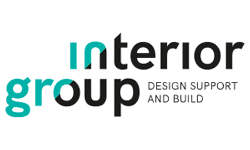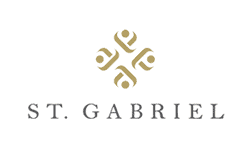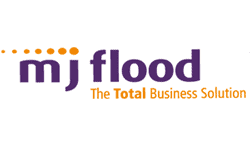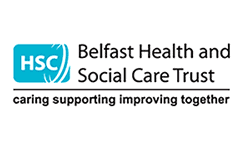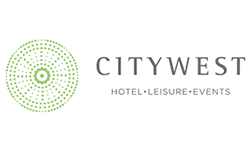DIGNITY AT WORK POLICY
PART A – INTRODUCTION, OBJECTIVES AND DEFINITIONS
Paint in Colour (“The Company”) is committed to protecting the dignity of all those who work within the company.
In particular, we are committed to ensuring that our company is free from any form of bullying or harassment at work and that our work environment is conducive to providing high-quality legal service in an atmosphere of respect, safety and equality.
No bullying or harassment within the company or in connection with the work of the company will be tolerated. Complaints of bullying or harassment may be dealt with either in a formal or an informal way, or by alternative means, as described below.
Complaints by employees or other persons in the workplace of bullying or harassment at work will be treated with fairness, sensitivity, respect and (as far as possible) confidentiality for all parties concerned.
Any person accused of bullying or harassment will be afforded natural justice and treated with fairness and sensitivity.
Both the company’s management and its employees have responsibilities for creating and contributing to the maintenance of a work environment free from bullying and harassment. Employees also have an obligation to cooperate with the investigation of complaints of bullying or harassment in the company.
Bullying
Bullying at work is repeated inappropriate behaviour, direct or indirect, whether verbal, physical or otherwise, conducted by one or more persons against another or others, at the place of work and/or in the course of employment, which could reasonably be regarded as undermining the individual’s right to dignity at work.
An isolated incident of the behaviour in this definition may be an affront to dignity but as it is not “repeated” it is not considered to be bullying.
The following is a non-exhaustive list of examples of types of bullying.
- Exclusion with negative consequences.
- Verbal abuse/insults.
- Being treated less favourably than colleagues.
- Intrusion – pestering, spying or stalking.
- Menacing behaviour.
- Intimidation.
- Aggression.
- Undermining behaviour.
- Excessive monitoring of work.
- Humiliation.
- Withholding work-related information.
- Repeatedly manipulating a person’s job content and targets.
- Blame for things beyond the person’s control.
Harassment
Harassment is any form of unwanted conduct related to any of the following grounds:
- Gender;
- Marital status;
- Family status;
- Sexual orientation;
- Religious belief (or lack thereof);
- Age;
- Disability;
- Race, colour, nationality or ethnic or national origin; or
- Membership of the Traveller community, which has the purpose or effect of violating a person’s dignity and/or creating an intimidating, hostile, degrading, humiliating or offensive environment for the person.
Harassment includes situations where the victim does not have the relevant characteristic but the harasser believes that the victim has that characteristic. A single incident may constitute sexual harassment.
For the purposes of the above definition, “conduct” includes acts, requests, spoken words, gestures or the production, display or circulation of written words, pictures or other material.
The following are some specific examples of the forms such conduct might take:
- verbal harassment – jokes, comments, ridicule or songs;
- written harassment – including faxes, text messages, emails or notices;
- physical harassment – jostling, shoving or any form of assault;
- intimidatory harassment – gestures, posturing or threatening poses;
- visual displays such as posters, emblems or badges;
- isolation or exclusion from social activities;
- pressure to behave in a manner that the employee thinks is inappropriate, for example, is required to dress in a manner unsuited to a person’s ethnic or religious background.
Sexual harassment:
Sexual harassment is any form of unwanted verbal, non-verbal or physical conduct of a sexual nature which has the purpose or effect of violating a person’s dignity and/or creating an intimidating, hostile, degrading, humiliating or offensive environment for the person.
For the purposes of the above definition, “conduct” includes acts, requests, spoken words, gestures or the production, display or circulation of written words, pictures or other material.
The following are some specific examples of the forms such conduct might take:
- Physical conduct of a sexual nature.
- Verbal conduct of a sexual nature.
- Non-verbal conduct of a sexual nature.
- Sex-based conduct that denigrates or ridicules or is intimidatory or physically abusive of a person because of his or her sex such as derogatory or degrading abuse or insults which are gender-related.
A single incident may constitute sexual harassment.
In this policy, the expression “bullying and/or harassment” should be read as including “bullying, harassment and/or sexual harassment”.
Employee
Provisions in this policy which refer to an “employee” shall also apply, where the context requires, to any person working within the company, including [directors, the chief executive], and temporary agency staff.
Intention irrelevant
The intention of the perpetrator of bullying or harassment is irrelevant. The fact that the perpetrator has no intention of bullying or harassing the victim is no defence.
Reasonable discipline and management is not bullying or harassment
The reasonable and essential discipline arising from the good management of the performance of an employee at work does not amount to bullying or harassment.
For example, an employee whose performance is continuously signalled at a level below-required targets may feel threatened and insecure in their work but this in itself does not indicate bullying or harassment.
Similarly, actions taken which can be justified as regards the safety, health and welfare of employees do not amount to bullying or harassment.
Bullying and/or harassment can exist in many situations
Bullying and/or harassment at work can involve people in many different work situations and at all levels:
- Chief executive/director/manager/supervisor to the employee;
- employee to partner/director/chief executive/manager;
- one employee to another (or group to group);
- customer or business contact to the employee;
- Employee/supervisor/manager/partner to customer/business contact.
All such situations are encompassed by this policy.
This policy extends to behaviour which occurs outside the company’s premises, such as at social functions or training events, provided there is a nexus with the work of the company and its employees.
Preservation of rights and prevention of victimisation
Making a complaint under this policy will not affect an employee’s statutory rights. No one will be victimised for making a complaint in good faith or for acting in good faith as a witness in an investigation.
Nothing in this policy limits the right of the company to investigate any matter which may relate to bullying and/or harassment in circumstances other than where a complaint has been made. All employees continue to have an obligation to cooperate with any such investigation.
Designated contact person
Painting in Colour has been designated as the contact person in respect of this policy. In the event that any employee has any question or query about the operation of this policy or requires any clarification about it, they may approach the designated contact person for advice, which will be given in the strictest confidence. Please note that speaking to the designated contact person is not the same as making a formal or informal complaint.
PART B – DEALING WITH BULLYING AND HARASSMENT
- THE INFORMAL COMPLAINT PROCESS
Method of making an informal complaint
Any employee who believes he or she is being bullied should, where possible, indicate directly to the person who complained that the behaviour in question is unacceptable.
If the mployee believes that the approach is not suitable or has been unsuccessful, the employee may then make an informal complaint.
Informal complaints should be addressed to Painting in Colour.
An informal complaint may be verbal or written
The Company will designate a person to handle the complaint. If the complaint was verbal, a written note of what is complained of will be taken by the designated person and a copy given to the complainant.
Procedure which will be followed
The designated person will establish the facts, the context and then the next course of action in dealing with the matter under the informal procedure.
(a) Where specific examples are given
If the complaint concerns bullying and/or harassment and includes specific examples of the behaviour complained of, the person complained against will be presented with the complaint and given a chance to respond.
After the response is received (or a reasonable period has elapsed without a response having been received) a method will be agreed to progress the issue to resolution so that both parties can return to a harmonious working environment without bullying or harassment is a factor.
If the behaviour complained of does not concern bullying or harassment as defined, an alternative approach will be put in place and a rationale recorded.
(b) Where no specific examples are given
If no specific examples are provided, there is no complaint to be answered under this policy, though other means of protecting and repairing workplace relationships may be considered by the designated person.
In either case, line managers will be kept informed, as appropriate, about the process in train.
The designated person will keep a record of all stages: the complaint, the first meeting, the action agreed and signed records of the final meeting. The purpose of the records, which will not include detail of discussions, is to provide evidence that the complaint was dealt with in an appropriate manner.
All parties will maintain, insofar as possible, the confidentiality of the informal process. Breaches of confidentiality will be treated as a serious disciplinary matter.
Resolution
When the resolution is found through informal procedures both parties will be given support or periodical reviews, as appropriate. These may include counselling or other appropriate interventions.
Where a complaint is not upheld and is found not to have been made in good faith, the complainant will be subject to serious disciplinary action.
- THE FORMAL COMPLAINT PROCEDURE
In cases where an employee believes an informal complaint is not a suitable means of addressing his or her concern, or where the employee believes that their previous recourse to the informal complaint procedure has been unsatisfactory, the employee may make a formal complaint of bullying and/or harassment.
In cases where an employee makes an informal complaint but where the company’s management believes (because of the gravity of the subject matter of the complaint or for some other reason) that the informal complaint procedure is inadequate to address the compliant, that complaint may be dealt with using the formal complaint procedure.
Method of making a formal complaint
Formal complaints should be made in writing and signed and dated. The complaint should be confined to precise details of alleged incidents of bullying or harassment, including the dates of such incidents and the names of any witnesses.
Formal complaints should be addressed to [insert name or title of a person to whom complaints should be directed].
On receipt of a formal complaint, an investigator will be designated by the company’s management. In exceptional circumstances, then if either party has an objection to the designated investigator, the company’s management may designate an alternative investigator. An objection to the designated investigator must be made in writing to the company’s management and must clearly outline the grounds of the objection.
Complaints in writing
Where a formal complaint is made but the complainant declines to submit a written statement, then a written record will be made of the complaint by the designated investigator.
The complainant will be asked to sign this record.
In the event that the complainant refuses to sign this record, the complainant will be made aware that the ability of the company to investigate the complaint on a formal basis may be compromised by any failure by the complainant to cooperate with the company’s procedures.
Efforts will be made to clarify this issue before any further steps are taken.
The complainant will be advised of the aims and objectives of the formal process, the procedures and time frame involved, and the possible outcomes. He or she will be assured of support as required throughout the process. He or she will be given a copy of this policy.
Procedure which will be followed
The investigation will be governed by terms of reference which will include the following provisions:
- a provision to the effect that the investigation will be conducted in accordance with this policy;
- an indicative time frame for the completion of the investigation;
- provisions relating to the scope of the investigation, indicating that the investigator will consider whether the complaint falls within the definition of bullying or harassment at work and whether the complaint has been upheld.
The person complained against will be notified in writing that an allegation of bullying or harassment has been made against him or her. He or she will be advised of the aims and objectives of the formal process and procedures and time frame involved and the possible outcomes. He or she will be assured of support as required throughout the process. A meeting will be organised at which he or she is given a copy of the complaint in full and any relevant documents including this policy.
The investigator will meet with the complainant and the person complained against and any witnesses or relevant persons on an individual basis with a view to establishing the facts. The complainant and the person complained against will both be entitled to be accompanied by a work colleague at any meeting.
All interviews with parties and witnesses will be conducted sensitively and with due respect to the rights of all concerned. The investigation will be conducted on a confidential basis, insofar as that is possible.
Statements from all parties and witnesses will be reduced to writing.
Copies of the record of their statements will be given to and agreed with those who make statements to the investigator.
During the investigation
All parties will continue to work normally during the investigation unless directed otherwise. The company’s management will make every effort to ensure the protection of all involved in the investigation, especially if the person complained against is a member of management.
The parties to the complaint should not communicate regarding the complaint. Any effort by any employee to intimate or otherwise influence any complainant or witness during the course of an investigation will be regarded as a disciplinary matter of the utmost gravity.
Conclusion of investigation
The objective of an investigation will be to ascertain whether or not, on the balance of probabilities:
(a) the behaviour complained of occurred and, if so,
(b) whether or not that behaviour amounted to bullying and/or harassment as defined.
It will be open for the designated investigator to determine that behaviour occurred which did not amount to bullying or harassment but which was inappropriate in some other way. In that event, separate disciplinary action may follow.
The investigation will be completed as quickly as practicable, preferably within the indicated time frame. The investigator will submit a report to the company’s management which report will include conclusions. The complainant and the person complained against will be given a copy of the report as soon as practicable by the company’s management and given an opportunity to comment, within a prescribed period of time, before the company’s management decides on any further course of action.
The company’s management will decide the action which is to be taken arising from the report in the light of the investigator’s report and any comments made by the parties. The company’s management will then, in writing, inform the complainant and the person complained against of the next steps which are to occur.
Action where the complaint is upheld
If a complaint is upheld the matter will be treated as a serious disciplinary issue and the company will follow the appropriate disciplinary procedures. If the perpetrator is not an employee (for example, if he or she is a client) other appropriate measures will be taken.
The company may also take other appropriate action to support and protect the victim and or to ensure that similar situations do not arise in future.
Action where the complaint is not upheld
If the complaint is not upheld but the complainant is found to have acted in good faith, the company may take appropriate measures to support both the complainant and the person complained against. This will include the making of appropriate efforts to ensure that anyone with knowledge of the complaint is made aware of the finding that it was not upheld.
Where a complaint is not upheld and is found not to have been made in good faith, the complainant will be the subject of disciplinary action.
Appeals
[Option 1: If either party is dissatisfied with the outcome of the formal complaints procedure, they may lodge an appeal within 7 days of receipt of notification of the outcome of the process. The reason for the appeal should be outlined in writing to the company’s management. The appeal will be heard by another person, of at least the same level of seniority as the original investigator. The appeal will focus only on the aspect of the case cited by the appellant as being the subject of the appeal.
The grounds of the appeal and any outcome and methodology employed will be appended to the investigation file.][Option 2: Prior to the commencement of the formal complaint procedure, the company will make provision for any appeal procedure which may need to be available in case the parties are dissatisfied with the outcome of the formal complaint procedure. Any such appeal procedure will be appropriate to the circumstances of the individual case.]
Resolution
Both parties will be given appropriate support and periodical reviews, insofar as is reasonable, after the formal process has been concluded.
- EXTERNAL INVESTIGATION
In any situation where, by reason of the size of the company, seniority of a complainant or a person complained against, or for any other reason, it is not appropriate for a formal complaint, informal complaint or appeal to be investigated by an employee of the company, then the company reserves the right to appoint an appropriate external person to carry out the investigation. Any such external person will carry out his or her functions in accordance with
the provisions of this policy and the company will give appropriate effect to the findings of such an external person.
This policy is valid from [DATE]. It may be amended from time to time at the discretion of the company’s management.
Signed on behalf of Painting in Colour: ___________________________
Manager/Director
NOTES:
- The HSA Code of Practice directs that “a [bullying] policy document should be written, dated and signed by a responsible person at senior management level.
- The HSA Code of Practice imposes a requirement to provide for some form of an appeals mechanism for formal complaints of bullying. It says: “Within the formal system, an appeals process for both parties should be in place” and goes on to prescribe how that process should operate. It then says: “Very small and micro organisations will need to consider at the outset of the formal process how they would manage a request for appeal and this may require outside independent support.” Two options of compliance are suggested in this section; companies may choose one or the other depending on the size and circumstances of the company.
I confirm that I have been given a copy of the Company’s Grievance, Disciplinary and Bullying and Harassment Procedures and Codes of Conduct and I hereby undertake to familiarise myself with and adhere to the codes and procedures to be taken following any breach of the code.
Signed: ___________________________
Dated: ____________________________




